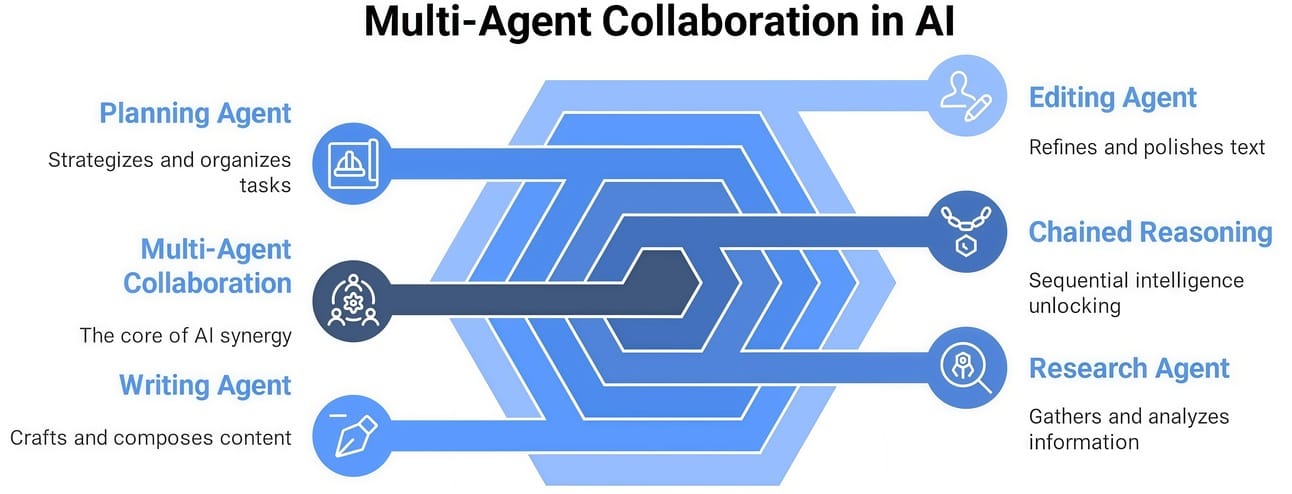- Explore My Collection of Essential AI Websites
- Posts
- The Age of Chained Reasoning — How Multi-Agent Systems Are Becoming the New Operating System
The Age of Chained Reasoning — How Multi-Agent Systems Are Becoming the New Operating System
From solo agents to networks of AI agents working together — the shift is here. The future isn’t just one smart assistant; it’s teams of autonomous AIs thinking, deciding, and acting together.
Just one AI agent? That’s yesterday.

Today, AI systems don’t just act — they collaborate. Autonomous agents are now teaming up, delegating tasks, and solving complex problems in sequences. This isn't science fiction. It's happening right now in your workflows, your apps, your tools.
Why It Matters

Multi-agent collaboration unlocks a new kind of intelligence — chained reasoning.
Think of it like a relay race:
One AI researches, another plans, a third writes, a fourth edits.
Each agent specializes. Together? They’re unstoppable.
This isn't just efficiency. It's a new structure for getting things done.
From Single Prompts to Chained Intelligence
In the old way, a single AI would try to do everything — it handled the entire task on its own. But now, with multi-agent systems, tasks are split across a team of AI agents, each with a specific role. Instead of static responses, these agents can engage in dynamic back-and-forths, refining results through conversation and context. Previously, we relied on one-time queries. Now, with persistent memory and coordination between agents, we're seeing far more complex and thoughtful execution. Solo AI worked well for simple tasks. Multi-agent AI is designed for bigger challenges — it's built for entire projects, not just prompts.
Real Tools Using This Right Now

Auto-GPT & BabyAGI → Early open-source setups chaining tasks across agents.
CrewAI → Assigns roles to agents (writer, planner, researcher) to work as a team.
MetaGPT → Structures agents into a startup-like hierarchy — product manager, dev, tester.
OpenDevin → Dev-focused agents collaborating to build and debug software in real time.
Real-World Use Case
Building a startup MVP with zero code:
Research agent scans competitors
Product agent drafts specs
Engineer agent codes frontend/backend
Tester agent finds bugs
Launch agent sets up landing page + email sequence
What took weeks now takes hours.
The Future of Work: Orchestrating AIs, Not Just Using Them
The new job isn't just using AI — it’s managing agents:
Designing workflows, giving them roles, setting goals.
Think of it like managing a remote team — only faster, cheaper, and available 24/7.
What You Can Do Today

✅ Learn to design prompts as instructions for agents
✅ Try tools like CrewAI, Auto-GPT, or LangGraph
✅ Map your work into a chain: “Research → Draft → Polish → Share”
✅ Think beyond chat — start thinking systems
The future isn’t man vs. machine — it’s human + teams of AI, working in sync.
Stay happy.
Reply